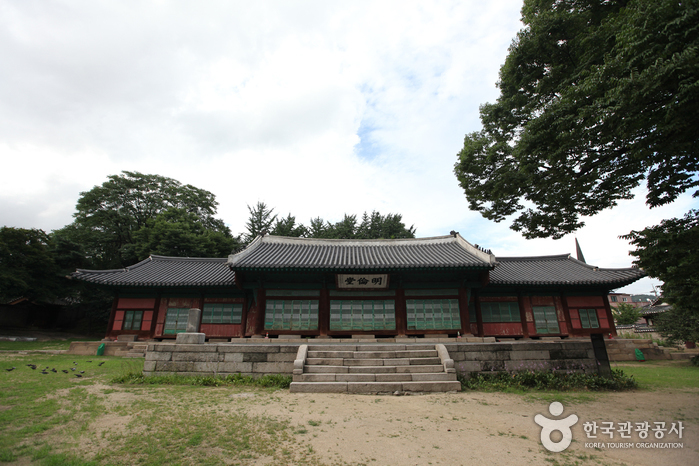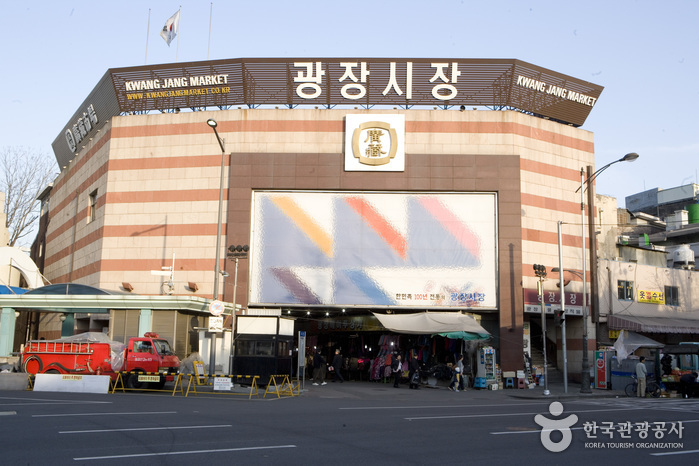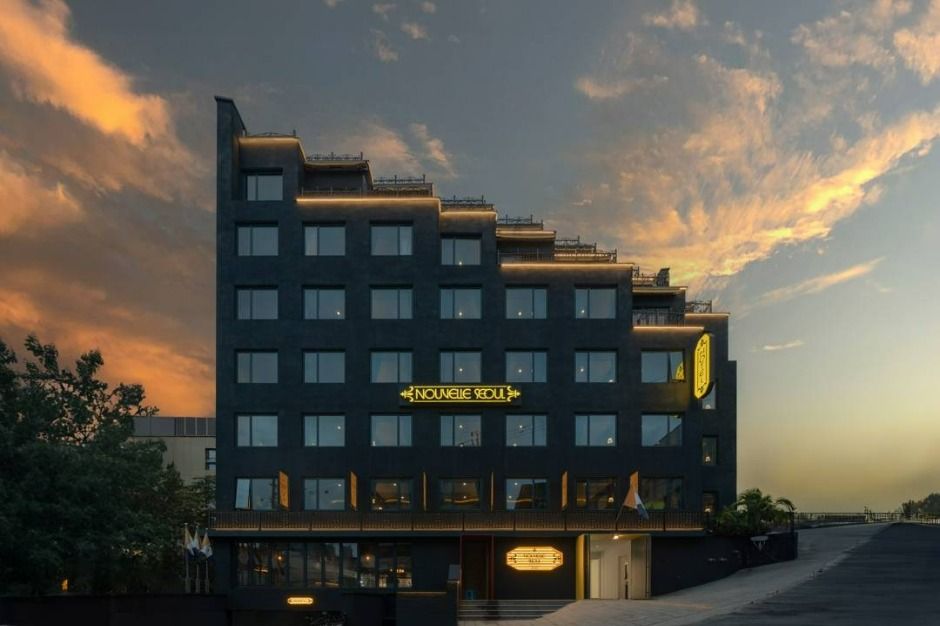Taj Palace (타지펠리스)
17.0Km 2025-05-19
39, Usadan-ro, Yongsan-gu, Seoul
Parque de la Ciencia de Seúl (서울특별시교육청 과학전시관)
17.0Km 2024-12-05
Nakseongdae-ro 101, Gwanak-gu, Seúl.
El Parque de la Ciencia abrió en julio de 2004 como centro educativo científico e instalaciones de práctica para estudiantes y profesores, así como también como lugar de cultura para los ciudadanos de Seúl.
Museo del Mueble de Corea (한국가구박물관)
17.0Km 2024-07-29
Daesagwan-ro 121, Seongbuk-gu, Seúl
Ubicado en una colina en el barrio de Seongbuk-dong, en Seúl, el museo brinda la oportunidad de apreciar los muebles tradicionales coreanos. El mobiliario del museo se expone según diferentes temáticas como su ubicación inicial en la casa, sus materiales de fabricación o su región de origen. El museo posee un total de diez casas tradicionales que han sido trasladadas allí y restauradas durante quince años. Se puede apreciar con naturalidad el ambiente residencial en la antigua Corea a través de la decoración interior, los murales con motivos florales tradicionales, las chimeneas y los patios, entre otros. Solo se puede acceder al museo con reserva, y se tarda aproximadamente una hora en recorrerlo en compañía de un guía. Este último le proporcionará diversa información y anécdotas sobre el mobiliario tradicional y la cultura de la vivienda en armonía con la naturaleza en Corea. Además, se pueden ver diferentes cuencos y vasijas antiguas que decoran los ambientes. La aparición de BTS en el programa de televisión coreano “You Quiz on the Block” permitió mostrar el Museo del Mueble de Corea. Además del grupo, el lugar ha recibido la visita de diferentes personalidades internacionales como el presidente de China, Xi Jinping, el actor Brad Pitt y la presentadora de televisión Martha Stewart, entre otros.
Zona Turística Especial de Itaewon (이태원 관광특구)
17.0Km 2025-06-20
Itaewon-dong, Yongsan-gu, Seúl
Itaewon es un destino turístico y de compras popular entre los extranjeros que visitan Corea. En esta zona, más de 2.000 tiendas se hallan una al lado de otra, formando un gran complejo comercial. Se puede encontrar de todo en estos locales: ropa, calzado, bolsos, etc. Además, la zona dispone de numerosos restaurantes, instalaciones recreativas, empresas de comercio internacional, agencias de viaje y hoteles de turismo. La gran cantidad de letreros en inglés y otros idiomas extranjeros en sus calles hacen sentir que no se está en Corea sino en un espacio internacional.
Las pequeñas tiendas de recuerdos se abrieron para atender a los soldados americanos después de la liberación de Corea. Desde entonces, siguieron erigiéndose centros comerciales para atender a las necesidades de los extranjeros residentes y turistas, y al ser anfitriones de los Juegos Olímpicos de 1988 en Seúl, Itaewon creció rápidamente como un barrio de compras. Desde mediados de los años 90, sus calles, que eran las vías del ejército estadounidense, pasaron a ser los bulevares de los ciudadanos de todo el mundo, especialmente con la llegada de turistas de Japón, Hong Kong, China, el Sudeste Asiático, África y Medio Oriente. En 1997, el área fue designada como Zona Turística Especial.
Los servicios de atención en chino y japonés, así como en inglés, están disponibles en la mayoría de las tiendas debido al hecho de que la mayoría de los clientes son extranjeros. Además, en la zona hay restaurantes especializados donde se pueden probar los sabores únicos de los platos del mundo entero. Hay comida turca, india, paquistaní, suiza, tailandesa, y, por supuesto, la auténtica comida estadounidense. El barrio de Itaewon, tras su renacimiento como uno de los mejores destinos turísticos del mundo, provee no solo oportunidades para las compras sino que también ofrece la oportunidad de ver y conocer la exótica y tradicional moda y cultura coreana. Aquí se realizan numerosos festivales tales como el Festival Global de Itaewon, en el que se muestran tanto la cultura coreana como las culturas tradicionales de todo el planeta.
Santuario Munmyo y Complejo Sungkyunkwan en Seúl (서울 문묘와 성균관)
17.0Km 2021-06-24
Sungkyunkwan-ro 31, Jongno-gu, Seúl.
+82-2-760-1472
Munmyo es un santuario en honor a Confucio, cuyas enseñanzas son la base del confucionismo. Está dedicado a sus discípulos y a otros eruditos también. Munmyo no solo es un santuario sino que también fue la institución educativa más importante de la dinastía Joseon.
El complejo contiene dos áreas principales: el Daeseongjeon, que alberga santuarios; y el Myeongryungdan, que tiene salones para seminarios y otras instalaciones. También hay dos dormitorios, Dongjae y Seojae, que en conjunto se denominan Sungkyunkwan. Frente al Myeongnyundang se yergue un gingko que es Monumento Natural N°. 59. En primavera y otoño se celebra un rito conmemorativo en honor de Confucio y sus discípulos.
Tiendas de Hanbok del Mercado Gwangjang (광장시장 한복매장)
17.0Km 2024-02-01
Changgyeonggung-ro, 88, Jongno-gu, Seúl
Suyeonsanbang (수연산방)
17.0Km 2024-07-19
8, Seongbuk-ro 26-gil, Seongbuk-gu, Seoul
Suyeonsanbang, a traditional Korean tea house located in Seongbuk-dong, was originally the house where the late Korean author Lee Tae-Jun wrote many of his books. Now, his estate has opened Suyeonsanbang’s doors to the public in the form of a charming and peaceful tea house. Famous for its savory tea, beautiful nature, and rich history, Suyeonsanbang has been covered by a variety of foreign media outlets like NHK (Japan), BBC (UK), French TV channels, and numerous Japanese magazines. To take a break during the summer heat, visitors come to Suyeonsanbang to try their patbingsu (shaved ice with red beans), one of its summer specialties. So come relax and be inspired in this traditional Hanok tea house.
PungGyeong [Korea Quality] (풍경 [한국관광 품질인증])
17.0Km 2025-10-23
32-6, Seonggyungwan-ro, Jongno-gu, Seoul
PungGyeong, located opposite Sungkyunkwan Academy in Jongno-gu, Seoul, is a hanok-style guest house whose outer wall is painted with a stylish blue pine tree. The guest house is equipped with bedrooms and a kitchen/diner with a table. Residents can have toast for breakfast, and simple Korean meals are provided for guests staying more than two days. In the winter you can sample traditional Korean tea brewed by the owner.
The Hyoosik Nouvelle Seoul Itaewon (더휴식 누베르 서울 이태원점)
17.0Km 2025-04-11
11, Usadan-ro 14-gil, Yongsan-gu, Seoul
Mercado Bangsan (방산 종합시장)
17.1Km 2024-01-23
Eulji-ro 33-gil 18-1, Jung-gu, Seúl



![PungGyeong [Korea Quality] (풍경 [한국관광 품질인증])](http://tong.visitkorea.or.kr/cms/resource/80/2633780_image2_1.jpg)


 Español
Español
 한국어
한국어 English
English 日本語
日本語 中文(简体)
中文(简体) Deutsch
Deutsch Français
Français Русский
Русский